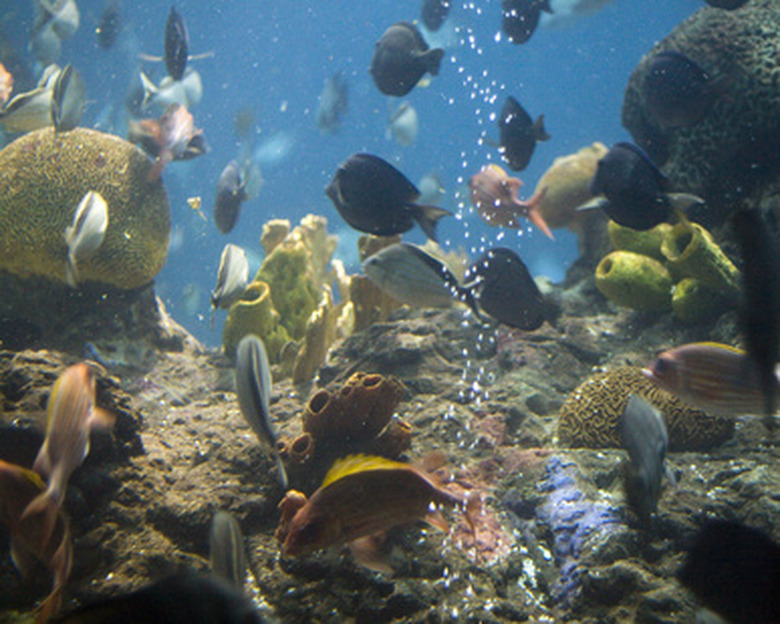300 Gal Fish Tank: DIY A 100-, 200- Or 300-Gallon Aquarium Tank
Things Needed
-
Calculator
-
Glass
-
Silicone
-
Tape
-
Base
Warning
When building a large aquarium, make sure that the structure of your building can hold the weight of the water. You may want to have a structural engineer inspect your floor joists before adding water to the aquarium. Make sure that the aquarium stand is strong enough to hold the aquarium once it is filled with water.
Tip
Television stands may make perfect aquarium stands, as they are designed to hold heavy objects. Always check engineering specifications to see how much weight a stand will support before using it as the base for your aquarium. Fill the aquarium with water and accessories at least 48 hours before adding fish or other animals, as this will give time for minerals in the water to settle and for the tank to begin to develop its own ecosystem.
Building an aquarium takes a serious commitment to researching mathematic and engineering factors of weight and water pressure. While it may seem simple to build a homemade aquarium, bad mathematical calculations can cause aquarium glass to break—or the weight of an aquarium can lead to major structural building damage. However, with the proper mathematics in place, building an aquarium can be easy.
Step 1
Calculate how wide, deep, and tall your tank should be, based on your style and volume preferences. Use your calculations to create your own tank design. To calculate the correct size of the tank, factor that you will need one cubic foot for every 7.47 gallons of water you plan to add to the tank. Therefore, if you plan to build a 300-gallon aquarium, you will need to build a tank that has approximately 41 cubic feet. To calculate cubic feet for a rectangular or square tank, multiply the length of tank by the width and depth. To calculate cubic feet for a round tank, multiply the square of the radius by the depth by 3.1417. One gallon of water takes up about 230 cubic inches. You may also choose to use an online calculator (See Resources).
Step 2
Calculate the weight of the water you will be adding to your tank. A gallon of water weights 8.33 lbs. An aquarium holding 300 gallons of water will need to be situated on a stand—and building floor with enough support—to hold about 2,500 pounds of water.
Step 3
Select the type of glass you will use for your aquarium. Annealed glass—or plate glass—is commonly available at hardware stores. It's generally about 1/4 inch thick and shatters when it breaks. Laminated glass is a multilayer glass that is made by taking two pieced of thin annealed glass and laminating them together. Laminated glass will not shatter when it is broken. Toughened glass—or tempered glass—is a tough glass that is very strong and durable. When it breaks, it shatters—and is unlikely to leak or crack before shattering. Polycarbonate (also known as Lexen or plexiglass) is a glass-like material that is thick and very tough. However, it is easily scratched and difficult to join together at the seams. The thickness of the glass depends on the height of the tank you plan to build. If using six-millimeter glass, build the tank no more than 50 inches high.
Step 4
Cut the glass according to your tank design specifications. Cuts should be exact.
Step 5
Tape the glass together to create the sides and base of the tank. Use tape on the exterior side of the tank. Join the tank sides together by lining each of the joints with a bead of silicone. Run your finger over the bead of silicone to flatten it into the joint. Allow the silicone to dry completely before adding water; wait 24 hours to be safe.
Step 6
Set up your aquarium with gravel, plants, water, fish, and other animals or accessories. (See Resource 2)
